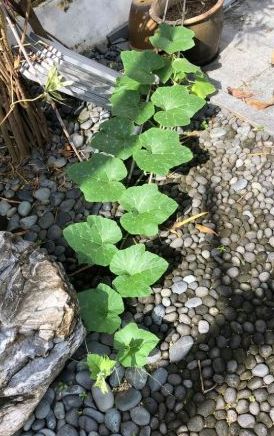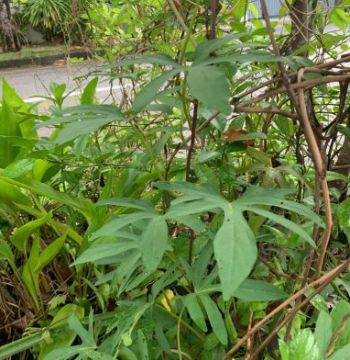Gardening FAQ #24 – What You Need To Know
In this article, we share how to allow pumpkin vine to mature correctly, what is stopping your plant from growing, what is properly killing your tomato plant and much more. Let’s go through the common gardening FAQ, problems and solutions you need when growing your plants either indoor and outdoor.
 Allow pumpkin vine to mature to produce flowers – a common question in gardening FAQ
Allow pumpkin vine to mature to produce flowers – a common question in gardening FAQ
I grew this from a slice of pumpkin bought from the supermarket. The plant has been growing quickly, but there are no flowers. Should I prune the top to stop it from spreading over the rock garden? Will that also help it to flower? I apply pellet organic fertiliser for fruit and vegetables once fortnightly.
Your pumpkin vine appears to be still young and may take more time to produce flowers.
You should not prune it at this stage. Usually, the male flowers will be produced first and in abundance, followed by female flowers which will produce the fruit.
Avoid using too much chemical pesticides – it will affect pollinators like bees. You need natural pollinators to help with the production of fruit.
You should grow the vine in the ground the next time to allow more root space for the plant to flourish. The pot you are using may be too small and this means you need to water the plant quite often as it grows larger.
If you want to do such transplant easily, you should explore using grow bags. See my other post on grow bags. Or another alternatives is to consider using raised garden kits. You can read our guide on using raised garden kit for more information.
Below is a short 4 minutes video on simple to tip on how to grow bigger pumpkin.
Vine likely a sweet potato
 I have this plant in my garden. Is it edible?
I have this plant in my garden. Is it edible?
It is likely a sweet potato plant.
Have you ever sown a sweet potato tuber in your garden? That could have grown into this plant. Or it could have come up from stem remnants that were not cleared completely if you had a similar sweet potato crop before.
The leaves of the sweet potato are edible and can be stir-fried. The young shoots and leaves are usually harvested as they are tender.
If you want to grow this better under control lighting, you can consider using a grow light. Read up my post on growing lights fixture where I show you the top 4 things you need to know.
Plants may need more space for roots to grow
 Why are the leaves of my plants turning yellow? The plants are both potted as well as grown in the ground.
Why are the leaves of my plants turning yellow? The plants are both potted as well as grown in the ground.
The older leaves of your ficus tree and palm are yellowing.
You may want to check if they have sufficient root space. In constrained spaces, roots would fill the space over time.
Hence water and nutrients become limited and plants will experience nutrient and water stresses, which will manifest in the symptoms seen.
If the plants are potted, move them into larger containers. In future, if you want to do such transplant easily, you should explore using grow bags. See my other post on grow bags.
For those grown in the ground or in a planter box, you may want to loosen the top few centimetres of soil around the plants, taking care not to damage existing roots, and then incorporate good quality compost with some organic fertiliser added to provide nutrients.
Tomato plants may have broad mites
The top leaves of my tomato plants have turned brown and brittle. What is wrong?
The plants may be infested with broad mites, which are microscopic sap-sucking pests. Deformed leaves cannot be saved and the plant’s growth is halted with the growing tip being damaged by the pests’ feeding activity.
Organic methods of controlling broad mites include applying sulphur soap solution (made by dissolving a bar of sulphur soap in some hot water and topping up with tap water at room temperature) or lime sulphur insecticide sold at nurseries.
Neem oil may also be used. Regular pesticide applications are needed to manage the pest population and should be done during the cooler part of the day to avoid damaging the leaves.